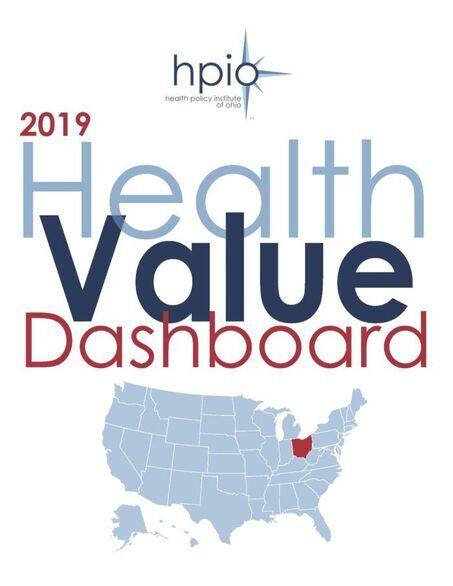2019 Health Value Dashboard™
What is the Health Value Dashboard?
The Health Policy Institute of Ohio’s Health Value Dashboard is a tool to track Ohio’s progress towards health value— a composite measure of Ohio’s performance on population health outcomes and healthcare spending. The Dashboard examines Ohio’s rank and trend performance relative to other states and highlights gaps in outcomes between groups for some of Ohio’s most at-risk populations.
Where does Ohio rank?
- Ohio ranks 46 out of 50 states and the District of Columbia (D.C.) on health value, landing in the bottom quartile. This means that Ohioans are less healthy and spend more on health care than people in most other states.
- Ohio ranks in the bottom quartile on nearly 30 percent of metrics and in the top quartile on only 5 percent of metrics, out of 100 metrics ranked in the Dashboard.
Key findings
Access to care is necessary, but not sufficient. Ohio performs relatively well on access to care (second quartile) but poorly on the other factors that influence overall health, landing in the bottom half of states for the social and economic environment, physical environment, public health and prevention and healthcare system domains.
Tobacco use drives poor health. Ohio ranks in the bottom quartile for adult smoking and children living in a household with a smoker. All states in the top quartile for health value have lower rates of adult smoking than Ohio.
Ohio’s per person spending for older Medicaid enrollees (aged category) is 1.4 times more than the U.S. rate; however, Ohio’s overall Medicaid spending per enrollee is relatively similar to other states. This suggests Ohio’s healthcare spending needs to be re-aligned to provide greater support for healthy aging and prevention as a way to reduce spending on costly sick care later in life.
Why does Ohio rank poorly?
Too many Ohioans are left behind. Without a strong foundation, not all Ohioans have the same opportunity to be healthy. For example, Ohioans with disabilities or Ohioans who are racial or ethnic minorities, have lower incomes or educational attainment, are sexual or gender minorities and/or who live in rural or Appalachian counties, are more likely to face multiple barriers to health.
Resources are out of balance. Ohio’s healthcare spending is mostly on costly downstream care to treat health problems. This is largely because of many missed upstream opportunities to prevent or better manage injury, illness and disability for thousands of Ohioans.
Addiction is holding Ohioans back. Addiction is a complex problem at the root of many of Ohio’s greatest health value challenges, including drug overdose deaths, unemployment and incarceration.
Publication graphics
Previous editions of the Dashboard
By:
Amy Bush Stevens, MSW, MPH
Reem Aly, JD, MHA
Published On
April 5, 2019
Table of Contents
 Download Publication
Download Publication
Focus Areas
Additional Downloads
- 2019 Health Value Dashboard with appendix
- 8-page executive summary
- 2-page snapshot
- Dashboard equity profiles
- Dashboard process, methodology and metric information
- Excel data appendix with metric descriptions, years, sources and Ohio data
- Excel equity appendix with metric descriptions, years, sources and Ohio data
- Frequently Asked Questions (FAQ) about the Dashboard
- Excel crosswalk on 2019 Dashboard data availability by race/ethnicity, education, income, disability
- Excel crosswalk on 2019 Dashboard data availability at the local level
